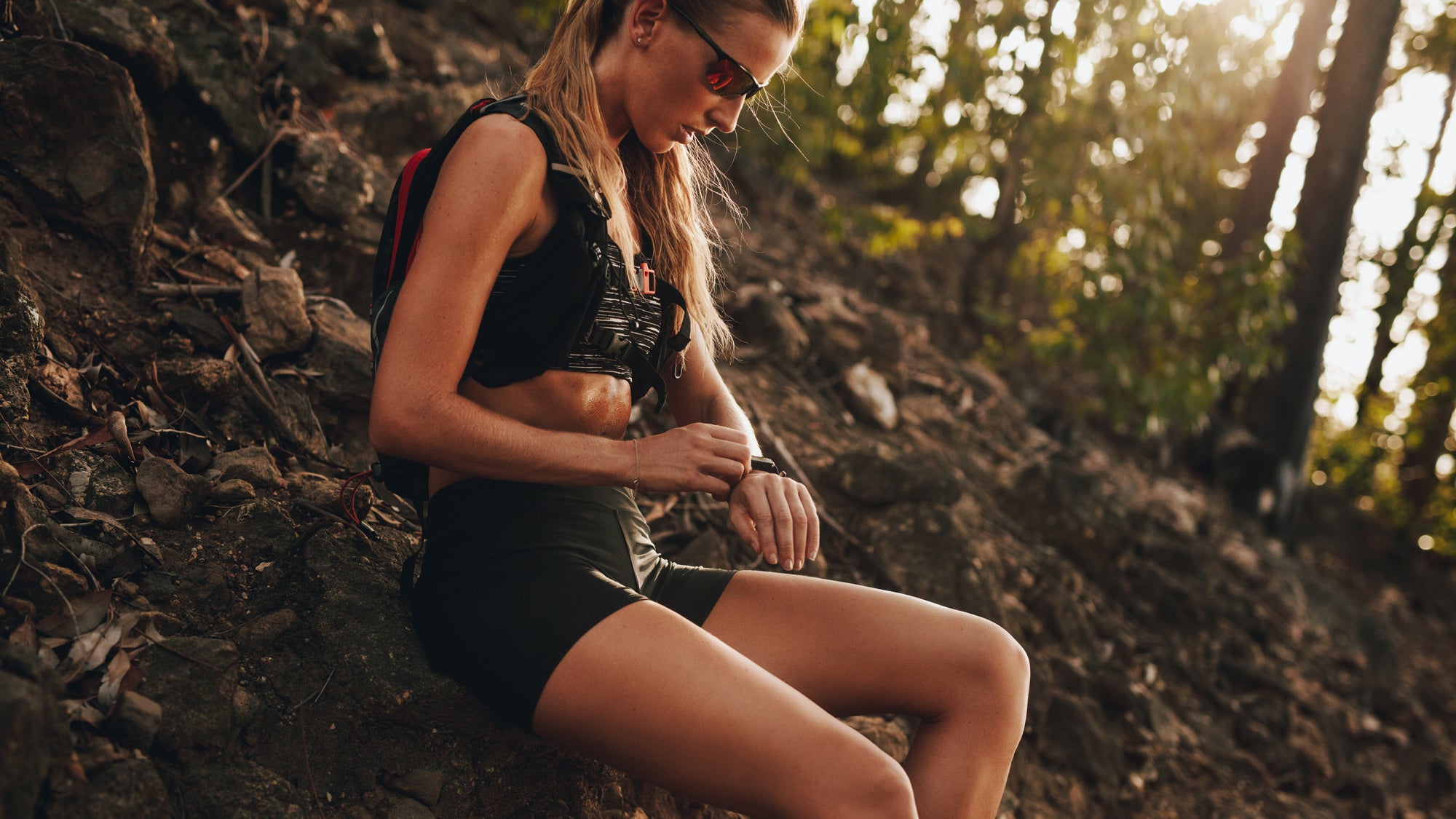Staying Hydrated In The Heat: 8 Things All Athletes Must Know

Should you be paying extra attention to staying hydrated in the heat? Absolutely. “Anytime you start or finish a workout dehydrated, you are at a competitive disadvantage,” says registered dietician Marni Sumbal, author of Essential Sports Nutrition. On the other hand, when you’re well-hydrated, your body sweats more efficiently (keeping you cooler) and your body all-around functions better.
Use these eight staying hydrated in the heat rules from Sumbal to keep yourself in top form this season.
Staying Hydrated In The Heat Rule 1: Get Salty
Quick science lesson: Blood plasma volume decreases when you sweat during exercise. Having the proper balance of sodium, a key electrolyte, can positively affect blood volume. “Whether taken before or during a run, sodium, and fluids will reduce the strain on the heart that occurs from sweating and a drop in blood volume,” says Sumbal.
Staying Hydrated In The Heat Rule 2: Pre-Load
As a way to increase that blood plasma volume ahead of a very sweaty run last-ing over 60 minutes, you can preload the day before with 600 to 1200mg of sodium in water or with a sports drink like Osmo, Skratch, Precision Hydration, Vite, or Nuun, says Sumbal. (If you have blood pressure, kidney, or heart issues, this practice isn’t for you.)
Staying Hydrated In The Heat Rule 3: Don’t Ditch Sports Drinks
If you only drink water for runs lasting over two hours—and even shorter if it’s particularly hot and steamy or if you’re a heavy sweater—you risk diluting sodium in the blood, putting strain on the muscles and heart and potentially leading to dizziness, nausea, and other symptoms. “Sport drinks, as opposed to using gels and water or blocks and water, are premixed in the ideal concentration to be digested and absorbed,” says Sumbal.
Staying Hydrated In The Heat Rule 4: Sip Frequently
…as in every eight to 10 minutes. Your goal is to guzzle down about 10 ounces of sports drink (50 to 80 calories, 120mg sodium) every 30 minutes of running. “Because the volume and concentration of a sport drink influences how quickly it will enter the body to help with hydration and muscle contractions, it’s better to consume nutrition frequently than to only take big sips once every 30 to 40 minutes,” says Sumbal. “Waiting until you feel thirsty means you are already a bit dehydrated and may lead to digestive issues.”
Staying Hydrated In The Heat Rule 5: Practice It
It’s harder than it looks to reach for a bottle mid-stride or to take the perfect swig without the liquid dribbling down your sports bra. Perhaps more importantly: “You also need time to train the gut to tolerate nutrition when running, which can take between six to eight weeks,” says Sumbal. So like everything else in running, practice this during training (even if you’re on the treadmill) so that race day will go smoothly.
Staying Hydrated In The Heat Rule 6: Watch the Humidity
Running in 85 degrees with 40 percent humidity feels verrrrry different than running in 85 degrees with 80 percent humidity. “Humidity causes sweat to evaporate more slowly, which means that your body will have trouble cooling itself,” Sumbal explains. “My best advice is to assess the weather before a run and ask yourself if you can have a quality workout—if you have any doubts, take it indoors.” (A good, specific rule of thumb: “Athletes should be very cautious running when it’s 90 degrees and humidity is over 60 percent,” Sumbal says.) If you do decide to go outdoors, definitely bring along that sport drink, but don’t sip more than recommended above: Your stomach can only empty about five to seven ounces of fluid every 15 minutes; drink more and you’ll get a sloshy stomach, Sumbal warns.
Staying Hydrated In The Heat Rule 7: Mind Your Period
Remember how blood plasma volume is decreased when you sweat? It is also impacted by a spike in the hormones estrogen and progesterone, which occurs just before you start your period. “During that time of the month, blood is thicker, body temp increases, and the muscle tissues breaks down faster—all of this means that it’s extra important to stay up on hydration,” says Sumbal. “In addition to using a sport drink during training, increasing daily salt intake (especially right before and after workouts) may help the body hold on to more water, making it easier to sweat and circulate blood.”
Staying Hydrated In The Heat Rule 8: Don’t Stop After the Run
“This is where most athletes fall short—when the run is over,” says Sumbal. While it’s great to rehydrate with plain old water, it’s important not to forget about the essential electrolytes that you lost in that sweat session. Opt for at least 400 to 600mg of sodium in 16 to 20 ounces of water soon after you complete a workout lasting 75 minutes or more. OJ plus a pinch of salt fits the bill, or Sumbal suggests Aqua from Carborocket. “Watery fruits like watermelon, berries, grapes, pineapple, and oranges are also great for post-workout rehydration,” she says. Run, refuel, and repeat!